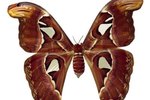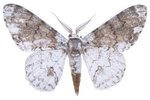
Caterpillars are the larval stage of moths and butterflies. In between the time they hatch and the time they wrap themselves in a shell while they turn into their final adults forms, their main job is to eat. Since they often end up as the main course for other creatures, some caterpillars have devised various ways to protect themselves, and many times that means venom.
Puss Caterpillar
The puss caterpillar, Megalopyge opercularis, is about an inch long and looks almost cuddly with its covering of long, soft hair, but it’s one of the most venomous caterpillars in the United States. When touched, the spines release a toxin that causes immediate pain and burning, usually accompanied by a rash and swelling. Victims may experience headaches, low blood pressure, nausea and fever, and can become ill enough to require medical treatment.
Saddleback Caterpillar
The saddleback caterpillar, Sibine stimulea, is difficult to mistake due to the brightly colored saddle-like markings on its back. It grows to about an inch long and has fleshy protrusions covered with spines poking up at each end of its body. If it’s touched, the spines give a nasty sting that can result in irritation, swelling and pain at the site. Sensitive people also may experience a headache and nausea that can last for several days.
Io Moth Caterpillar
The io moth caterpillars (Automeris io) are mostly light green in color, but they have narrow red and white stripes running the length of their bodies that make them easy to identify. They also have a covering of small spines that look almost like tiny trees growing out of their backs. As intriguing as these spines look it’s best not to touch them, since they can cause a stinging or burning sensation as the spines break off and become embedded in the victim’s skin.
Bag Shelter Caterpillar
The bag shelter caterpillar (Ochrogaster lunifer) travels in long lines with others of its kind, giving rise to the term processionary caterpillars. They are poisonous and can cause both external and internal bleeding when touched. In some cases the poison can cause a person to bleed to death. Even a few stray hairs from these dark brown bugs can cause respiratory problems for those unlucky enough to inhale them. A spine in the eye may lead to blindness.
Monarch Butterfly Caterpillar
The monarch butterfly caterpillar (Danaus plexippus) turns from a poisonous crawling bug into one of the best-known butterflies in North America. It has bright stripes of white and yellow arranged in partial circles around its black body and can be more than 2 inches long when full grown. This venom in this caterpillar comes from all the milkweed it eats and is enough to sicken or poison predators who try to make a meal of it.
References
- North Carolina State University Extension: Do Venomous Caterpillars Live in Your Yard?
- University of Florida IFAS Extension: Puss Caterpillar
- North Carolina State University Extension: Poisonous Caterpillars
- Auburn University College of Agriculture: Stinging Caterpillars
- It’s Nature: 10 Beautiful Yet Toxic Caterpillars
- Sea World: Animals: Monarch Butterfly
- University of Kentucky: Stinging Caterpillars
- Queensland Museum: Bag-Shelter Moths
Photo Credits
-
Jupiterimages/Photos.com/Getty Images



